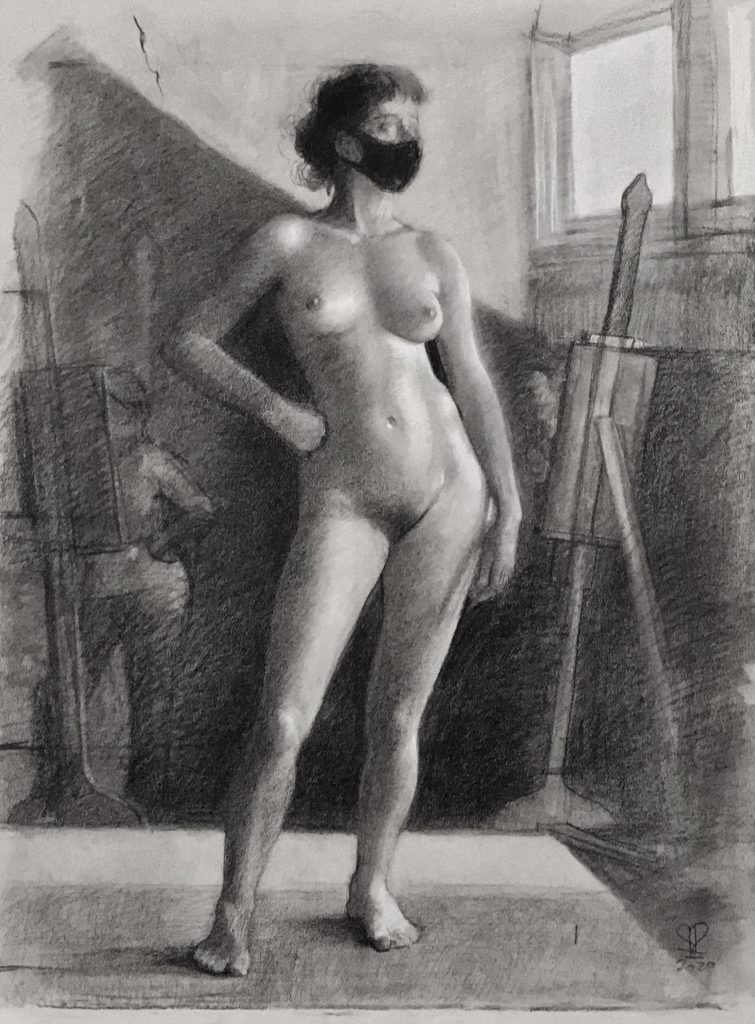
Today’s mask mandate as seen in a figure drawing studio provides a window into 19th century studio practice that we would not otherwise encounter. A glance at this drawing immediately brings Thomas Eakins, Kenyan Cox, Cecilia Beaux, and Mary Cassatt to mind.
Why? Before the 20th century nude models were required to wear masks that concealed their identity. The 19th century realist artists who included the unmentionable masks did so at the risk of appearing gauche, as most artists who studied the figure worked from a classical point of view, utilizing the figure for idealized representations accompanying grandiose moral, ethical, or social statements. The realist painters depicted the reality of what they saw and experienced which left most viewers to grimace at the often ugly truth that was layed before them.
Ugly, uncomfortable or not; reality and truth continue to exist. This figure drawing demonstration by Carol Peebles helps bring to mind not only the history of Realist painting as it intersects with study of the nude, but offers a visual mark regarding the current pandemic situation.
Carol has been working as an artist in New Orleans for over 20 years. She is the founder of the Blue Easel Club drawing Atelier http://blueeaselclub.com and maintains a vibrant practice in her own work and teaching. Her pastel portraits are highly sought after and receive prizes internationally.
Carol Peebles’ http://carolpeebles.com drawing depicts the masked model in one of her classes and offers an exquisite rendering of the nude as well as a statement on the time in which we currently live that simultaneously recalls art history.
Figure drawing, or the drawing of the nude form is one of the most challenging disciplines in the study of art. To draw the figure is to study at once movement, anatomy, morphology, geometry, light, perspective, form, and expression. Drawing, painting, or sculpting the figure is the most advanced discipline within the visual arts.
The figure is one of the most powerful vehicles for expression that exists. It is a profound expresser of the human predicament, different for each artist and unique to each time. The study of the figure ventures beyond a study or rendering of the simple and expected; the process incorporates the highest elements of understanding of divine connection, of insight, and of expression.
Artist Auseklis Ozols recalls: ” Pythagoras said: ‘Man is the measure of all things,’ throughout the history of art this has been interpreted to mean that the human figure contains the proportions of everything in nature. The intense study of the figure prepares the student for all confrontations with nature, the tools of Aesthetics as well as emotional and spiritual concerns.” To learn more about Auseklis Ozols please visit https://ozolscollection.org
2020 has been an especially challenging year for visual artists who often rely on Galleries and Museums to sell or showcase their work. Practice Preservation is happy to share the work of visual artists who’s work intersects with our mission, and who are currently trying to manage creating, selling, and promoting their own work without the benefit of a space where people can gather to view available items.
Each Featured Artist post provides a link and contact information that goes directly to the artist showcased. If you are interested in purchasing work shown here please contact the artist directly and work out arrangements with them independently.
A few masked nudes in history by famed American Realists:
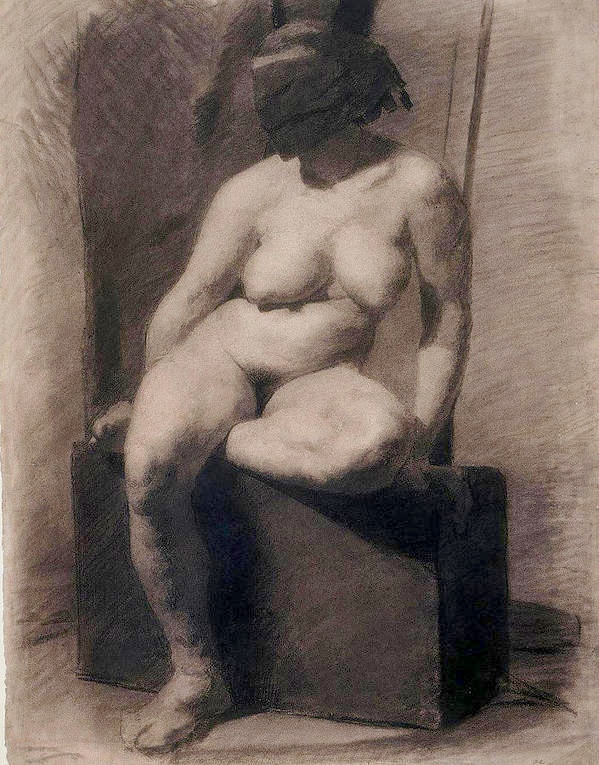
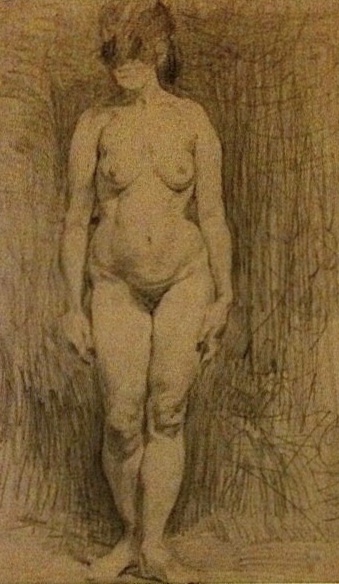
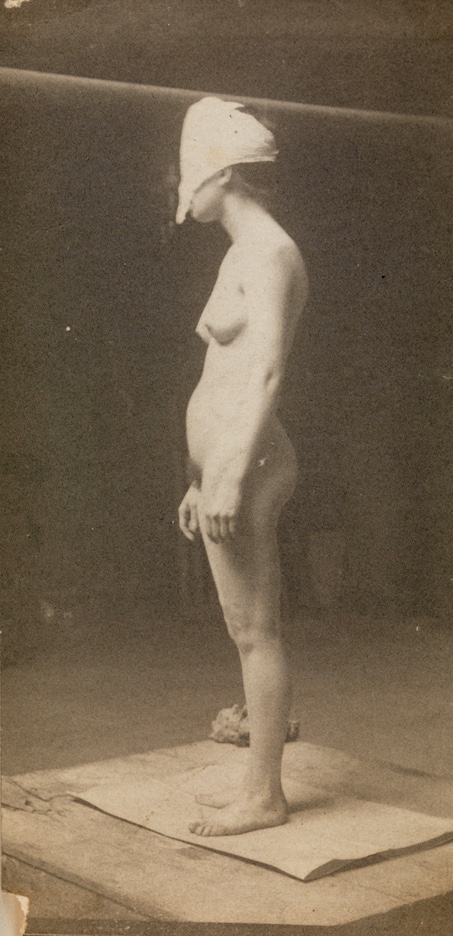
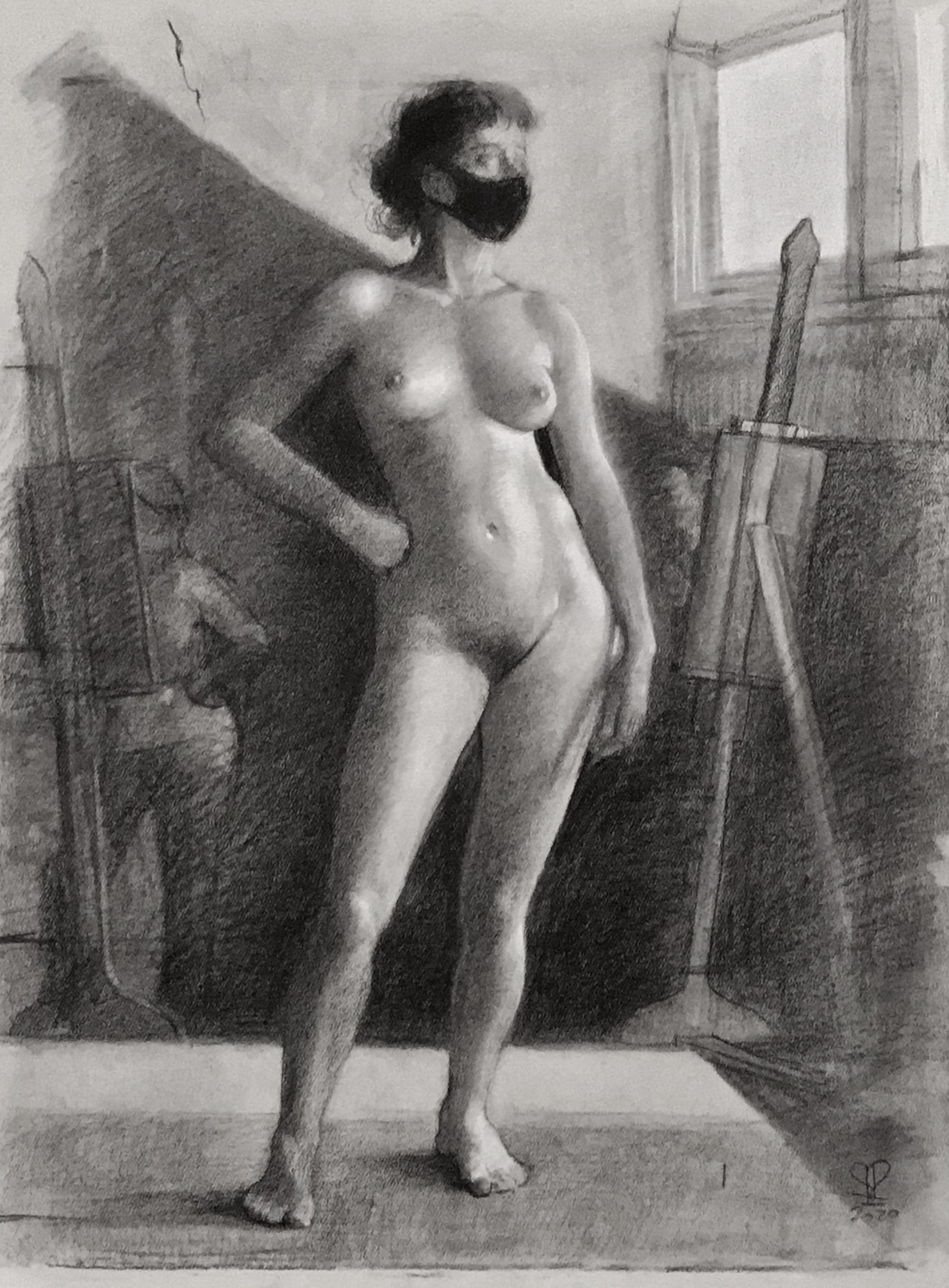

How wonderful to hear the history of it all! What a great contribution you are making to the art world by addressing these issues. Auseklis Ozols is my mentor and has taught me all I know. I’m always happy to hear his thoughts on art, and now I am lucky to hear Saskia’s as well. Feeling very grateful for The International Institute for Practice, Research and Preservation through the Ozols!
Thank you Carol !